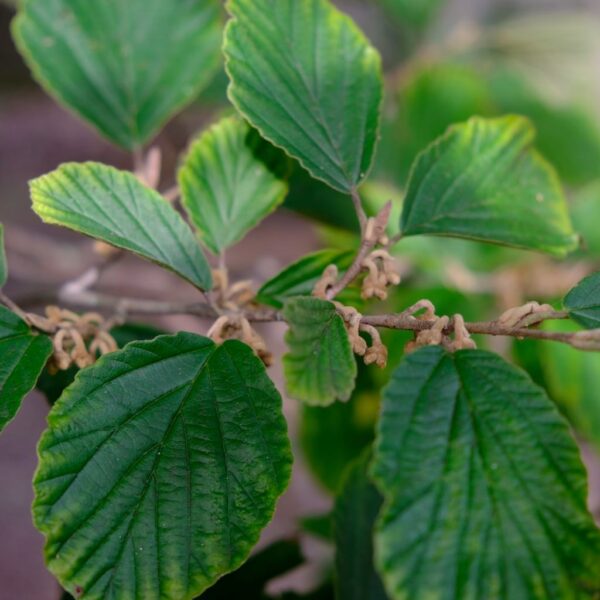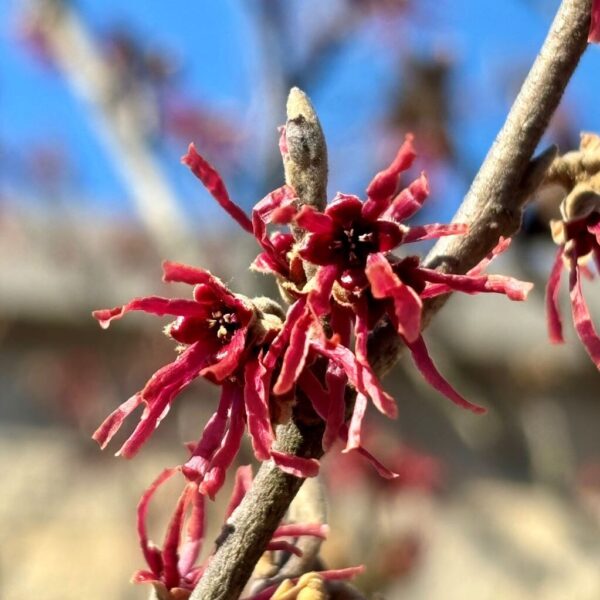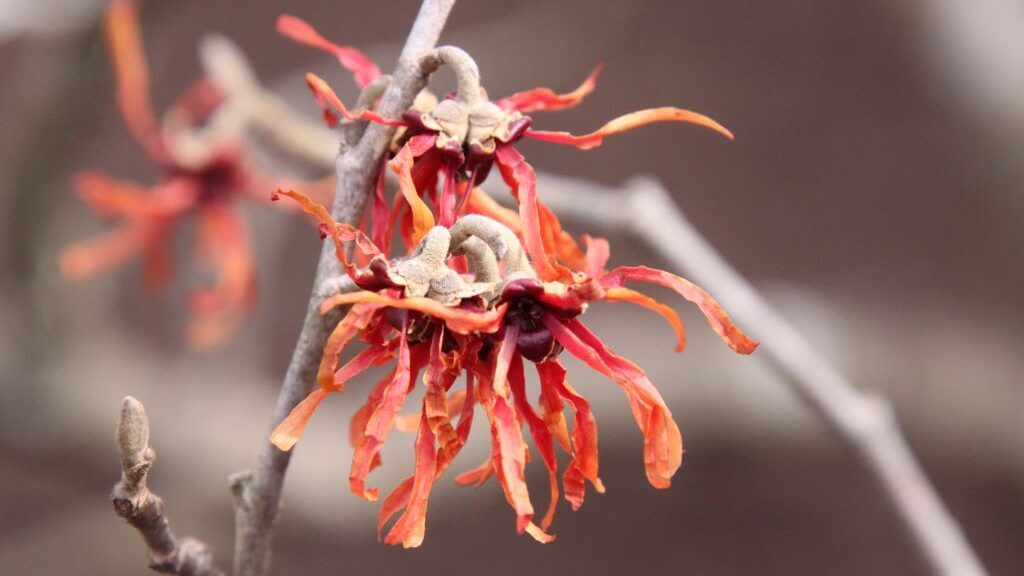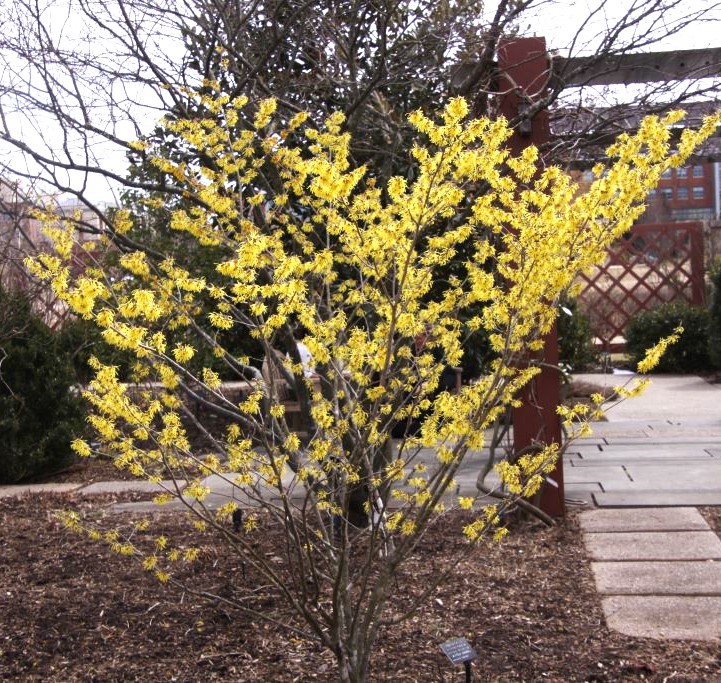
Witch hazels are large deciduous shrubs in the Hamamelis genus, representing over 5 species and various hybrids from North America and Asia. The botanical name, Hamamelis, translates to “together with fruit,” referring to the occurrence of both flowers and fruit at the same time, which is a unique feature of some native North American trees. These shrubs offer year-round ornamental interest in the landscape, including fragrant flowers in the winter, spring, and fall (depending on the species). Bark is gray and smooth, while soft green foliage turns various shades of yellow, brown, and orange in autumn. Witch hazels thrive in moist, rich, slightly acidic soils, often tolerating shade but blooming better with increased sunlight. Hamamelis are generally slow-growing (hybrids are a bit faster) and may need to be occasionally pruned due to their spreading growth habit in order to maintain a good upright form.
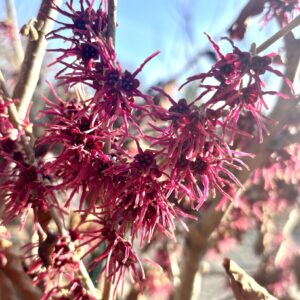
Witch hazels are celebrated every season as they are often one of the first pops of color in a late-winter garden, blooming when the weather is cooler and when much of the garden is still in slumber. These shrubs primarily rely on insects for pollination. Flies, moths, small wasps, and several species of bees have all been documented as potential pollinators. Many flies and nocturnal moths are active during cooler temperatures and can generate heat by shivering to stay warm. Witch hazel blooms are a colorful attractant to many of these pollinators and their mildly sweet fragrance and sticky nectar is considered a welcome treat, especially during a time of slim pickings!
North American species of witch hazel include H. virginiana (common witch hazel), H. vernalis (vernal or Ozark witch hazel), and H. ovalis (big-leaf witch hazel). H. virginiana is a fall-blooming (usually in October) yellow witch hazel and is one of the largest, getting up to 20 feet tall and wide. The bark from this species has many medicinal properties, mainly in the form of an astringent and anti-inflammatory that you may already even have in your medicine cabinet! H. vernalis is one of the earliest and longest blooming species (starts as early as January). This plant has great golden fall foliage with red to yellow flowers blooming into mid-spring. ‘Amethyst’ is a popular H. vernalis hybrid cultivar in the trade and its deep purple-red flowers can be seen at the Arboretum in our Rose and Fragrance Garden, among many of our other witch hazels. H. ovalis is a newly described species from the Southeastern US, only growing in very isolated areas with leaves 2–3 times larger than that of the common witch hazel.
H. mollis (Chinese witch hazel) is native to China and H. japonica (Japanese witch hazel) is native to Japan. Both of these produce fragrant yellow flowers from January to March. Hamamelis mollis ‘Wisley Supreme’ is a featured cultivar that is currently blooming in the gardens. In addition to these, there are many cultivars of interspecific hybrid witch hazels (Hamamelis x intermedia) which are crosses between Japanese and Chinese witch hazels. These cold-hardy (USDA zones 5–8) hybrids grow to about 8–15 feet tall and have increasingly grown in popularity in botanical gardens due to their superior ornamental attributes. The spidery flowers of these hybrids can last for up to 8 weeks and come in shades of yellow, orange, red, and purple. Blooms are able to withstand very low temperatures by partially closing up. After a few days of warmer weather, they open fully, permeating the air with their citrusy scent and brightening up a late winter’s day.
Some featured hybrid cultivars in the Arboretum’s collections include Hamamelis × intermedia ‘Arnold Promise’ (yellow blooms), Hamamelis × intermedia ‘Diane’ (burnt-orange red blooms), and Hamamelis ‘Amethyst’ (deep red-purple blooms). The majority of these can be found in the Rose and Fragrance Garden and along the Strolling Gardens. Don’t delay your visit — many of these blooms may only persist in their glory for a few more weeks! Be sure to search for them on the Arboretum’s interactive Plant Finder map!


